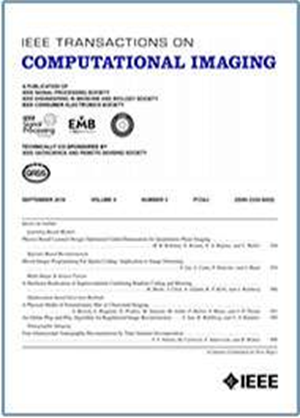Structured Illumination Microscopy With Uncertainty-Guided Deep Learning
IF 4.2
2区 计算机科学
Q2 ENGINEERING, ELECTRICAL & ELECTRONIC
引用次数: 0
Abstract
Super-resolution microscopy enables the visualization of subcellular structures with unprecedented detail, significantly advancing life sciences. Among the various techniques available, structured illumination microscopy (SIM) provides an ideal balance of speed, resolution, and phototoxicity. Recent advancements in deep learning have further enhanced SIM capabilities, achieving improved imaging quality with higher signal-to-noise ratios and fewer measurements. However, the opaque nature of these deep learning models complicates the quantification of uncertainty in their outputs, which may lead to visually appealing but scientifically inaccurate results, particularly challenging for clinical diagnostics. In this paper, we introduce a two-step strategy that not only quantifies the uncertainty of deep learning models but also enhances super-resolution reconstruction. The first step implements a novel sparse-constrained loss function, incorporating Jeffrey's prior, to accurately predict uncertainty maps. These maps assess the confidence levels of the network's predictions and identify potential inaccuracies. In the second step, these predicted uncertainty maps serve as an attention mechanism, directing the neural network's focus towards areas of high uncertainty to improve the reconstruction of high-frequency details and textures. A series of simulations and experiments confirm that our method accurately quantifies uncertainty and improves high-resolution image reconstruction, increasing the peak signal-to-noise ratio by an average of 1.7 dB and structural similarity by 0.06, compared to traditional methods on mitochondrial and microtubule datasets. Our approach holds promise for advancing the application of deep learning-based super-resolution microscopy in clinical settings.结构照明显微镜与不确定性引导的深度学习
超分辨率显微镜使亚细胞结构的可视化与前所未有的细节,显著推进生命科学。在各种可用的技术中,结构照明显微镜(SIM)提供了速度,分辨率和光毒性的理想平衡。深度学习的最新进展进一步增强了SIM功能,通过更高的信噪比和更少的测量,实现了更高的成像质量。然而,这些深度学习模型的不透明性质使其输出中的不确定性的量化复杂化,这可能导致视觉上吸引人但科学上不准确的结果,对临床诊断尤其具有挑战性。在本文中,我们引入了一种两步策略,不仅量化了深度学习模型的不确定性,而且增强了超分辨率重建。第一步实现了一个新的稀疏约束损失函数,结合杰弗里先验,以准确预测不确定性映射。这些地图评估了网络预测的可信度,并识别出潜在的不准确性。在第二步中,这些预测的不确定性图作为一种注意机制,引导神经网络的焦点转向高不确定性的区域,以改善高频细节和纹理的重建。一系列的模拟和实验证实,与传统方法相比,我们的方法准确地量化了不确定性,提高了高分辨率图像的重建,峰值信噪比平均提高了1.7 dB,结构相似性提高了0.06。我们的方法有望推进基于深度学习的超分辨率显微镜在临床环境中的应用。
本文章由计算机程序翻译,如有差异,请以英文原文为准。
求助全文
约1分钟内获得全文
求助全文
来源期刊

IEEE Transactions on Computational Imaging
Mathematics-Computational Mathematics
CiteScore
8.20
自引率
7.40%
发文量
59
期刊介绍:
The IEEE Transactions on Computational Imaging will publish articles where computation plays an integral role in the image formation process. Papers will cover all areas of computational imaging ranging from fundamental theoretical methods to the latest innovative computational imaging system designs. Topics of interest will include advanced algorithms and mathematical techniques, model-based data inversion, methods for image and signal recovery from sparse and incomplete data, techniques for non-traditional sensing of image data, methods for dynamic information acquisition and extraction from imaging sensors, software and hardware for efficient computation in imaging systems, and highly novel imaging system design.
 求助内容:
求助内容: 应助结果提醒方式:
应助结果提醒方式:


